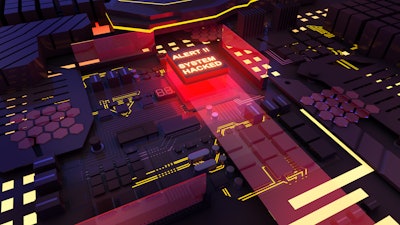
The “alert fatigue” crisis plaguing Security Operations Centers (SOCs) isn’t really about volume. It’s about fighting adversarial systems with tools designed for a non-adversarial world.
The Real Problem Hidden Behind Alert Fatigue
Most organizations treat the flood of security alerts as a resource management problem: Hire more analysts, build bigger dashboards, optimize workflows. But this misses the fundamental issue. Traditional alert triage assumes threats behave predictably—that you can create rules, assign priorities, and systematically work through queues.
Adversaries don’t follow our prioritization frameworks.
The most dangerous attacks deliberately avoid triggering high-priority alerts. They masquerade as routine network traffic, legitimate user behavior, or benign system events. Meanwhile, SOC analysts spend their time chasing the obvious signatures that any competent attacker already knows how to evade.
This creates a perverse dynamic: The more sophisticated your adversaries become, the less useful your alert-driven security posture becomes.
Beyond Human-Scale Decision Making
Finance learned this lesson decades ago. When markets became too complex and fast-moving for human traders to process all available information, the industry didn’t just hire more traders—it fundamentally changed how decisions were made. Algorithmic trading emerged not because humans were slow, but because the decision space had grown beyond human cognitive capacity.
SOC operations face the same transition point. The issue isn’t that analysts can’t handle 10,000 alerts per day; it’s that no human can effectively reason about the complex interdependencies, temporal patterns, and subtle anomalies that indicate genuine threats in modern environments.
What AI Actually Changes
Alert triage isn’t about automating existing workflows—it’s about enabling entirely different approaches to threat detection. Instead of categorizing alerts based on predefined rules, AI systems can identify patterns that emerge from the interaction of seemingly unrelated events across time and systems.
This matters because sophisticated attacks are designed to be invisible to rule-based detection. They succeed by staying below individual alert thresholds while building toward objectives across multiple systems and timeframes. Human analysts, no matter how skilled, struggle to maintain awareness of these distributed patterns while simultaneously handling urgent immediate tasks.
The value isn’t in processing alerts faster—it’s in recognizing threats that don't generate obvious alerts in the first place.
Rethinking Success Metrics
The industry’s obsession with Mean Time to Detect (MTTD) and Mean Time to Respond (MTTR) reflects the same thinking that created the alert fatigue problem. These metrics assume threats announce themselves clearly and success means responding quickly to known signatures.
But what about threats that operate for months without generating alerts? What about attacks that succeed precisely because they never triggered your detection systems? Traditional SOC metrics are optimized for measuring responses to known attack patterns, not for detecting unknown threats or preventing successful compromises that leave no trace.
More sophisticated organizations are shifting toward outcome-based metrics: Did we prevent business impact? Did we detect threats before they achieved their objectives? Did we identify adversary presence regardless of whether it triggered alerts?
The Strategic Imperative
Organizations still operating alert-driven SOCs are essentially fighting with 20th-century tools against adversaries using 21st-century methods. This isn’t a criticism of existing approaches—they were appropriate for their era. But as adversaries become more sophisticated and environments more complex, the gap between human-scale decision making and threat-scale complexity continues to widen.
The question isn’t whether AI will transform security operations—it’s whether your organization will make this transition proactively or be forced into it by adversaries who have already moved beyond rule-based thinking.
Today the organizations best positioned for future threats are those treating AI as an enabling technology for fundamentally better security approaches, not just a way to process existing alerts more efficiently. The goal isn’t to eliminate alert fatigue. It’s to make alerts irrelevant to your primary security strategy.


















